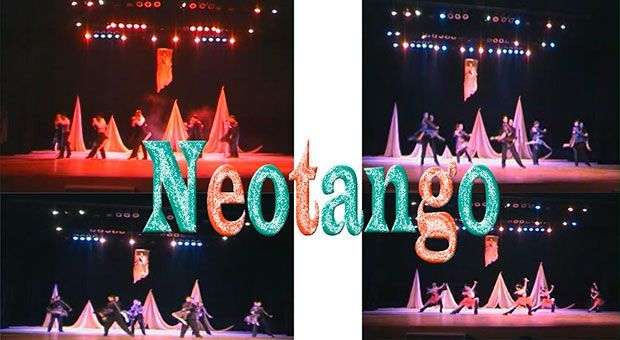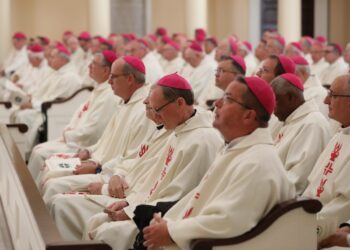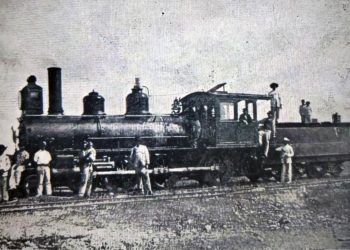Same as our rumba, the Argentinean tango was born in the slums, son of rootlessness, of sadness and joy, presence and nostalgia. Since then, it has remained one of the most powerful international musical genres in the world, although in Cuba today, perhaps because of its complexity, we rarely see it on stage.
However, the young company Neotango defends gaucho dance presence on the island and tries to modernize it through the merger with rhythms and dances such as the habanera, son, bolero, flamenco, ballet and contemporary dance.
Under the general direction of Professor Rosa Elena Álvarez, the artistic direction of her daughter Carolina Balmaseda and theatrical advice of her husband, the renowned actor Mario Balmaseda, the group combines the freshness of the new with the experience.
To keep abreast of the work of this one of a kind company OnCuba spoke to Rosa Elena during the rehearsals previous to their most recent previous presentation at the Mella Theater.
“Neotango resulted from the desire of my daughter Carolina, who studied theater, but she became so passionate about tango that left it. She took classes for a while in a group of amateurs, and it turned out that she was good. While there, she was invited with her dance partner to a festival in Bariloche, Argentina.
“Those Cubans had great impact in that festival. People could not believe that in Cuba people could dance tango and do it well. So the Embassy of Argentina supported Carolina to stay six months studying dance. There he met the real milongas (places where tango is danced) and learned the movements of men and women, which is essential when teaching it is the man who leads. On his return, he began to teach a training workshop for those interested in learning the rhythm. Then we decided to form a group with a choice of six couples from 60 boys who participated in the workshop. As my daughter was very young at the time (she was only 20 years old), and I am a specialist in dance, I took over the management of the company to support them. “
Self-taught, since in the island there are no schools dedicated to Buenos Aires rhythm, this group of youngsters, mostly tango dancers in the street, was perfecting. “We taught them ballet, contemporary dance, and folk dances. One year we were working on galas, without compromise, without getting paid anything, in order to make ourselves known. Seeing that people cared for what we did, we asked the Caricatos agency, which at that time belonged to the National Union of Writers and Artists of Cuba, to make us a hearing. So in February 2007 the company was professionalized. “
TANGO IS AGELESS
Having taught important dance figures like Jose Manuel Carreno, principal dancer of the American Ballet Theatre and Aurora Vasquez, principal dancer of the National Ballet Company of Mexico, Rosa Elena Alvarez now has her own school of ballet for children 3-9 years in the l Juan Marinello Cultural Center.
In this same place, the workshops continue for tango lovers of all ages, which have recently joined their young students. “Tanguiños we named them, and have already been presented at events such as the International Meeting of Dance in Urban Landscapes that just ended. Now we try to complete it with little boys because we only have one. “
For those who have stereotyped the genre as something that only attracts old timers, Professor Rosa Elena explains: “The tango is not something for the elderly and it is very interesting how is attracting youngsters, because it is also a genre that creates very nice relationships between people . “
THEY DANCED IN THE OTHER’S TURF
In December 2008, Neotango was invited to participate in the Cambalache Festival, one of the most important in Buenos Aires, where they presented the performance “Life is a Dream” .
If you are invited to dance in other people’s turf, as some say, is normal to be nervous, but despite the challenge posed to any to do tango in the cradle of tango, “the reception by the Argentine public was spectacular for novelty and difference of their moves , ” Rosa Elena says.
The following year they released the Barrio Tango show, the first of its kind presented in scenes of Cuban theater. “I think it was what marked the group. There we were listed as “Company of elegance,” for the costumes, the way we move. Then there have been others like Tanguendo, Miradas, Todo Tango, among others. My highest aspiration is that we can do that again. “
“Also top-notch Argentinean professors have come to Cuba to impart free lessons. Even in 2007 Neotango received an intensive seminar by four -time world champion in tango, Laszlo Budai. All agree that the level of Cubans is incredible. “
Aregentinean Milongas in the Paseo del Prado?
Milonga is usually the place where tango is danced. In Argentine popular clubs, men and women sit around the track, and when the music starts, they select a partner to accompany them. It turns out that in Cuba, the milongas are held at the Paseo del Prado.
Milongas in the Paseo del Prado
Every Sunday from 5-7 in the afternoon Neotango meets in the park to dance tango. Some just watch, while the more daring join the moves. The local people attend and foreign visitors often go by and start dancing, trying to imitate the boys of the company.
BEYOND THE TANGO , A FAMILY
After the first steps of Neotango , there is a family to help them walk. Carolina, Mario and Rosa Elena have decided to share the art, work and love. “We have always been very close all three, talked a lot and try to join each other. When I married Mario, he was in the boom and I even left my job in the background to support him. “
“As I began my workshop school for children, which is something independent , roles changed and Mario , who was not so young, supported me unconditionally , as it so does my daughter Carolina. “
Some may wonder how the actor of En silencio ha tenido que ser, Baraguá o El hombre de Maisinicú, has become the advisor of the company. “Mario became advisor for Neotango because in addition to the various musical and dance forms, we merge with the theater. That is something that characterizes our shows, which have a drama. No dancing just because, but to tell a story through movement. “
Carolina Balmaseda right now is in the United States promoting the work of the company. “She was invited to the TEM Festival, theatrical event every year in Miami, where she was welcomed. She has given many workshops and is giving private lessons. But above all, she is spreading what we do so on her return we continue providing a refreshing insight into our dance. “
By Elcira Martínez Adán











